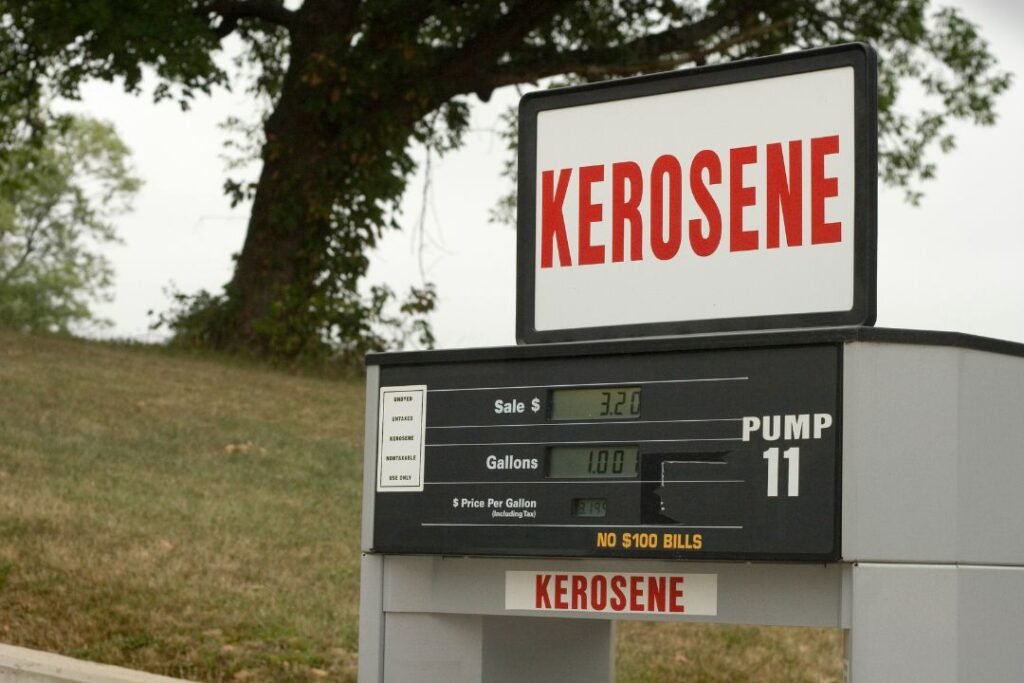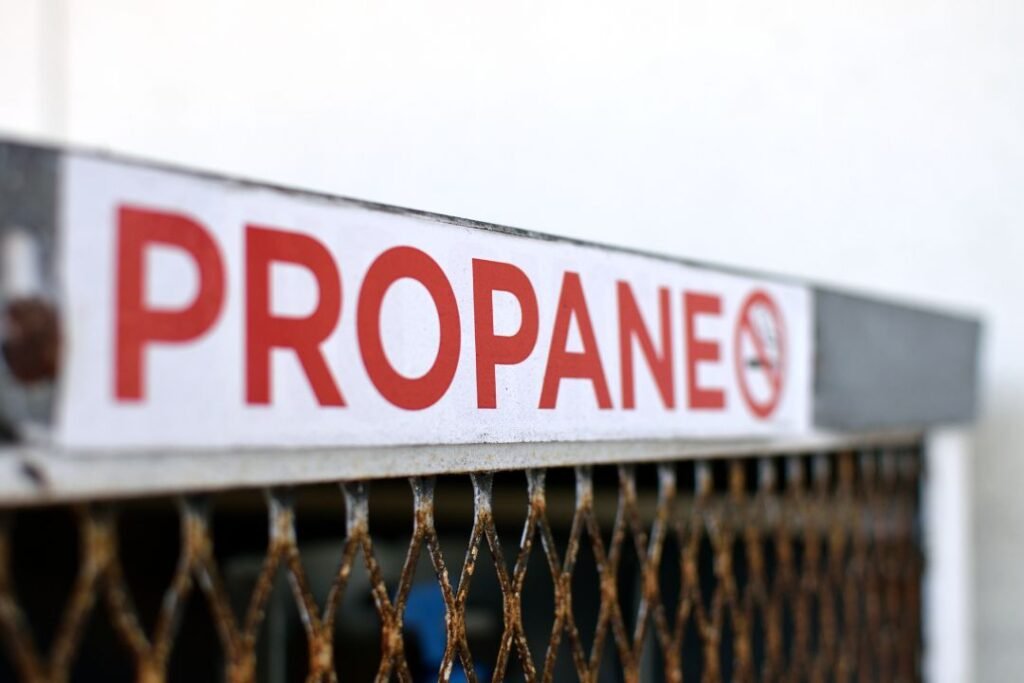In the realm of doomsday prepping and survivalism, the significance of reliable energy sources cannot be overstated.
Whether preparing for a natural disaster, a societal collapse, or any other catastrophic event that disrupts the normal functioning of society, having access to essential utilities such as heat, light, and cooking fuel becomes paramount for survival.
Among the myriad choices available, two commonly considered options are kerosene and propane.
Each possesses distinct properties, advantages, and limitations that merit careful consideration, particularly in the context of prolonged survival situations.
The primary aim of this blog post is to delve into the fundamental disparities between kerosene and propane, shedding light on their chemical compositions, primary uses, storage requirements, and practical applications in doomsday scenarios.
By dissecting these aspects, readers will gain valuable insights into the comparative merits of each fuel type and be better equipped to make informed decisions regarding their preparedness strategies.
Table of Contents
Understanding Kerosene and Propane


A. Definition and Composition
Kerosene, also known as paraffin oil, is a combustible hydrocarbon liquid that is derived from petroleum.
It is typically clear or slightly yellowish in color and has a distinctive odor.
Chemically, kerosene primarily consists of alkanes, which are saturated hydrocarbons containing only single bonds between carbon atoms.
Its molecular formula usually ranges from C9H20 to C16H34, with variations depending on the refining process and intended use.
In contrast, at standard temperature and pressure, propane is an odorless and colorless gas.
It belongs to the family of liquefied petroleum gases (LPG), along with butane and isobutane.
Propane is obtained during the refining of crude oil and natural gas processing.
Its chemical formula is C3H8, indicating that each molecule contains three carbon atoms and eight hydrogen atoms.
B. Origins and Evolution of Use
The utilization of kerosene and propane traces back to the 19th century, coinciding with the dawn of the Industrial Revolution.
Kerosene gained prominence as a replacement for whale oil in lamps and lanterns, offering a more abundant and affordable source of illumination.
Its widespread availability and relatively low cost made it a staple in households worldwide, particularly in areas without access to electricity.
Propane, on the other hand, emerged as a byproduct of the burgeoning petroleum industry.
Initially, it was primarily viewed as a waste product and flared off during oil refining processes.
However, its value as a portable and efficient energy source became increasingly recognized over time.
Propane’s versatility led to its adoption for various applications, including residential heating, cooking, and powering appliances such as stoves, grills, and water heaters.
C. Primary Uses in Everyday Life
1. Kerosene
- Lighting: Historically, kerosene lamps were ubiquitous for indoor and outdoor lighting before the widespread availability of electricity.
- Heating: Kerosene heaters are still used in many parts of the world for space heating, especially in areas where other heating options are impractical or unavailable.
- Cooking: While less common than in the past, some traditional cooking stoves and portable camping stoves still utilize kerosene as a fuel source.
2. Propane
- Residential Heating: Propane is commonly used in areas where natural gas infrastructure is lacking or impractical. It powers furnaces, boilers, and space heaters in homes and businesses.
- Cooking: Propane is a popular choice for outdoor cooking appliances such as barbecue grills, camping stoves, and portable cooktops.
- Transportation: Propane is used as an alternative fuel for vehicles, particularly in fleets such as buses and taxis, due to its lower emissions compared to gasoline and diesel.
By understanding the historical context and primary uses of kerosene and propane, we gain insight into their significance as essential energy sources in both modern and traditional contexts.
Key Differences Between Kerosene and Propane


A. Chemical Composition and Properties
1. Kerosene
- Kerosene is a liquid hydrocarbon fuel primarily composed of alkanes, with molecular formulas typically ranging from C9H20 to C16H34.
- It is less volatile than propane and remains in a liquid state at room temperature and atmospheric pressure.
- Kerosene has a higher energy density than propane, meaning it provides more energy per unit volume.
- When burned, kerosene produces carbon dioxide (CO2) and water vapor, along with small amounts of other combustion byproducts such as carbon monoxide (CO) and nitrogen oxides (NOx).
2. Propane
- Propane is a gaseous hydrocarbon with the chemical formula C3H8.
- It is highly volatile and readily vaporizes at moderate temperatures, transitioning from a liquid to a gas when released from a pressurized container.
- Propane has a lower energy density compared to kerosene, but burns more cleanly and efficiently, producing fewer pollutants.
- When combusted, propane generates primarily carbon dioxide (CO2) and water vapor, with significantly lower emissions of carbon monoxide (CO), particulate matter, and sulfur dioxide (SO2) compared to kerosene.
B. Storage Requirements and Lifespan
1. Kerosene
- Kerosene is typically stored in containers made of steel or plastic, designed to prevent leakage and minimize evaporation.
- Proper storage of kerosene involves keeping it in a cool, dry, and well-ventilated area away from heat sources and direct sunlight.
- The shelf life of kerosene can vary depending on factors such as temperature, exposure to air, and the presence of contaminants. Generally, properly stored kerosene can remain usable for one to two years without significant degradation in quality.
2. Propane
- Propane is stored and transported in pressurized tanks or cylinders made of steel or aluminum.
- These tanks are equipped with safety valves and pressure relief devices to prevent over-pressurization and ensure safe handling.
- Unlike kerosene, propane does not degrade over time and can be stored indefinitely without loss of quality.
- However, proper maintenance of propane tanks is essential to ensure safety and prevent leaks or corrosion.
C. Safety Considerations
1. Kerosene
- Kerosene is flammable and should be handled with caution to prevent accidental ignition or combustion.
- Improper storage or use of kerosene can lead to the release of harmful fumes, posing health risks such as respiratory irritation or carbon monoxide poisoning.
- Adequate ventilation is crucial when using kerosene indoors to minimize exposure to combustion byproducts and ensure proper air quality.
2. Propane
- Propane is highly flammable and can pose fire and explosion hazards if mishandled or stored improperly.
- Leaking propane gas is odorless, so an odorant called ethyl mercaptan is added to facilitate detection in case of leaks.
- Proper installation and maintenance of propane equipment, including regulators, valves, and connectors, are essential to prevent leaks and ensure safe operation.
By examining the chemical properties, storage requirements, and safety considerations of kerosene and propane, we gain valuable insights into their distinct characteristics and suitability for various applications.
Comparing Uses in a Doomsday Scenario


A. Dependence on Infrastructure
1. Kerosene
- Kerosene is relatively self-contained and does not require extensive infrastructure for storage or distribution. Once acquired, it can be stored in containers and accessed without reliance on external utilities.
- In a doomsday scenario where traditional energy infrastructure is disrupted or unavailable, such as during natural disasters or societal collapse, kerosene provides a reliable source of energy for lighting, heating, and cooking.
2. Propane
- Propane, while portable and versatile, relies on infrastructure for storage, transportation, and distribution. It is typically stored in pressurized tanks and requires specialized equipment for handling and refueling.
- In a doomsday scenario, access to propane may be limited by disruptions to transportation networks or supply chains, potentially impacting its availability for use in cooking, heating, and other essential applications.
B. Longevity and Shelf Life
1. Kerosene
- Kerosene has a finite shelf life and can degrade over time due to factors such as exposure to air, temperature fluctuations, and contamination. While properly stored kerosene can remain usable for one to two years, its effectiveness may diminish beyond that timeframe.
- In a doomsday scenario where long-term survival is a concern, the finite shelf life of kerosene could pose challenges for sustained use over extended periods without access to fresh supplies or replenishment.
2. Propane
- Propane, unlike kerosene, does not degrade over time and can be stored indefinitely without loss of quality. This inherent stability makes propane a more reliable option for long-term storage and use in survival scenarios.
- In a doomsday scenario, the indefinite shelf life of propane offers reassurance to preppers and survivalists, as it ensures a dependable source of energy for cooking, heating, and other essential tasks without the risk of deterioration or spoilage.
C. Practicality in Different Situations
1. Kerosene
- Kerosene is well-suited for indoor use in confined spaces, making it ideal for lighting, heating, and cooking in residential settings, shelters, or survival bunkers.
- Its liquid form allows for easy storage and transportation in containers of various sizes, providing flexibility and convenience for preppers preparing for emergencies.
2. Propane
- Propane’s portability and high energy density make it a practical choice for outdoor cooking, heating, and other off-grid applications. It is commonly used in camping stoves, portable grills, and backup generators.
- While propane may require additional precautions for indoor use due to its flammability and ventilation requirements, it also offers versatility and efficiency for off-grid living and emergency preparedness.
By evaluating the dependence on infrastructure, longevity, and practical considerations of kerosene and propane in doomsday scenarios, individuals can make informed decisions regarding the selection and integration of these fuels into their survival strategies.
Storage Considerations


A. Proper Storage Techniques for Kerosene
1. Container Selection
- Choose containers made of durable materials, such as steel or plastic, designed specifically for storing kerosene.
- Ensure that containers are clean, dry, and free from any residues or contaminants that could compromise the quality of the fuel.
2. Location
- Store kerosene containers in a cool, dry, and well-ventilated area away from direct sunlight, heat sources, and ignition hazards.
- Avoid storing kerosene near open flames, electrical appliances, or other sources of heat or sparks that could ignite flammable vapors.
3. Ventilation
- Provide adequate ventilation in the storage area to prevent the buildup of fumes and reduce the risk of exposure to combustion byproducts.
- Ensure that ventilation openings are positioned to allow for the natural dissipation of vapors and promote air circulation.
4. Maintenance
- Regularly inspect kerosene containers for signs of damage, corrosion, or leakage, and address any issues promptly to prevent spills or accidents.
- Monitor the quality of stored kerosene periodically, checking for water contamination, sediment buildup, or other indicators of degradation.
B. Propane Tank Maintenance and Safety Measures
1. Tank Inspection
- Conduct regular visual inspections of propane tanks for signs of damage, corrosion, or leakage, paying attention to valves, connectors, and pressure relief devices.
- Ensure that tanks are securely anchored and protected from physical damage or tampering that could compromise their integrity.
2. Valve Operation
- Familiarize yourself with the operation of propane tank valves and pressure regulators, following manufacturer guidelines for safe handling and usage.
- Exercise caution when opening or closing valves to prevent sudden releases of propane gas and minimize the risk of accidents or injuries.
3. Leak Detection
- Use a propane gas detector or leak detection solution to check for leaks around tank fittings, connections, and appliance valves.
- If a leak is detected, immediately shut off the supply valve, evacuate the area, and contact a qualified technician to address the issue.
4. Storage Location
- Position propane tanks outdoors in a well-ventilated area, preferably on a stable, level surface away from ignition sources, flammable materials, and high-traffic areas.
- Keep tanks clear of vegetation, debris, or other obstructions that could impede access or pose fire hazards.
By adhering to proper storage techniques and maintenance practices for kerosene containers and propane tanks, individuals can mitigate risks, prolong the lifespan of their fuel supplies, and ensure safe and reliable access to energy resources in emergency situations.
Practical Applications in Survival Scenarios


A. Accessibility and Availability
1. Kerosene
- Kerosene is widely available in many regions and can be purchased from hardware stores, home improvement centers, and fuel distributors.
- Its ubiquity and established distribution networks make kerosene relatively accessible, even in remote or rural areas where other energy sources may be scarce.
2. Propane
- Propane availability may vary depending on local infrastructure and supply chain dynamics. While readily accessible in many urban and suburban areas, rural or isolated regions may have limited access to propane refueling stations or distributors.
- Propane availability can also be affected by disruptions to transportation networks or fuel delivery systems during emergencies or natural disasters.
B. Efficiency and Effectiveness in Different Situations
1. Kerosene
- Kerosene is highly efficient for indoor heating and lighting, providing a steady and reliable source of warmth and illumination.
- Its liquid form allows for precise control of fuel consumption, making it suitable for cooking on traditional stoves or portable kerosene burners.
- While kerosene may produce odors and soot during combustion, proper ventilation and maintenance can minimize these effects and ensure safe and efficient usage.
2. Propane
- Propane offers excellent efficiency and versatility for outdoor cooking, heating, and power generation applications.
- Propane-fueled appliances such as barbecue grills, camping stoves, and portable heaters provide instant heat and precise temperature control, making them ideal for outdoor gatherings, camping trips, and off-grid living.
- Propane generators offer reliable backup power during emergencies, providing electricity for essential appliances and devices when grid power is unavailable.
C. Sustainability and Long-Term Viability
1. Kerosene
- While kerosene is derived from non-renewable fossil fuels, its relatively low cost and widespread availability make it a practical choice for short to medium-term energy needs.
- In a long-term survival scenario, reliance on kerosene may become unsustainable due to finite fuel supplies and environmental considerations.
2. Propane
- Propane is a versatile and sustainable energy source with lower greenhouse gas emissions compared to traditional fossil fuels.
- Its clean-burning properties and efficient combustion make it an attractive option for environmentally conscious preppers and off-grid enthusiasts.
- Propane can be sourced from renewable sources such as biogas or produced through processes such as electrolysis, offering potential pathways for sustainable energy production in the future.
Whether preparing for short-term emergencies or long-term self-sufficiency, understanding the practical applications and limitations of these energy sources is essential for ensuring preparedness and resilience in uncertain times.
Conclusion

Several key points have emerged from this investigation into the differences between kerosene and propane and their practical applications in survival scenarios:
- Chemical Composition and Properties: Kerosene is a liquid hydrocarbon fuel with a higher energy density than propane, while propane is a gaseous hydrocarbon with lower emissions and higher efficiency.
- Storage Requirements and Lifespan: Kerosene has a finite shelf life and requires proper storage techniques to prevent degradation, whereas propane can be stored indefinitely without loss of quality.
- Safety Considerations: Both kerosene and propane pose fire and explosion hazards if mishandled, emphasizing the importance of proper storage, handling, and maintenance.
- Practical Applications: Kerosene is well-suited for indoor heating, lighting, and cooking, while propane excels in outdoor cooking, heating, and power generation.
- Accessibility and Availability: Kerosene is widely available and accessible in many regions, while propane availability may vary depending on local infrastructure and supply chains.
- Efficiency and Sustainability: Kerosene offers efficient energy solutions for short to medium-term needs, while propane provides sustainable and versatile options for both short and long-term survival scenarios.
When planning for doomsday scenarios or emergency preparedness, it is essential to consider the specific needs and challenges of each situation. Based on the insights gained from this analysis, the following recommendations can be made:
- For short-term emergencies or localized disruptions, kerosene may be a practical choice due to its widespread availability and versatility for indoor heating, lighting, and cooking.
- In long-term survival scenarios or off-grid living situations, propane offers sustainable and efficient energy solutions for cooking, heating, and power generation, particularly in outdoor environments.
- Regardless of the chosen fuel type, proper storage, maintenance, and safety precautions are essential to ensure reliable access to energy resources and minimize risks during emergencies.
In an increasingly uncertain world, the importance of preparedness and resilience cannot be overstated. Whether facing natural disasters, societal upheaval, or other unforeseen challenges, having access to reliable energy sources is paramount for survival and well-being.
Whether relying on kerosene for indoor comfort or propane for outdoor versatility, the key is to prioritize safety, sustainability, and adaptability in planning for an uncertain future.

